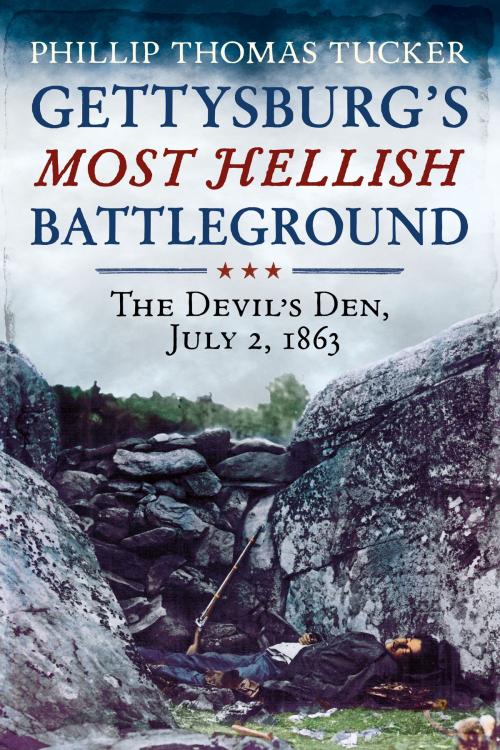Gettysburg's Most Hellish Battleground
The Devil’s Den, July 2, 1863
Nonfiction, History, Americas, United States, State & Local, Civil War Period (1850-1877)| Author: | Phillip Thomas Tucker | ISBN: | 1230003141915 |
| Publisher: | Fonthill Media | Publication: | March 19, 2019 |
| Imprint: | Language: | English |
| Author: | Phillip Thomas Tucker |
| ISBN: | 1230003141915 |
| Publisher: | Fonthill Media |
| Publication: | March 19, 2019 |
| Imprint: | |
| Language: | English |
During the crucial three days of combat at Gettysburg, the most nightmarish place on the entire battlefield was appropriately named the Devil's Den. This jumble of huge boulders situated at the southern end of Houck's Ridge was truly a hell on earth during the decisive afternoon of July 2, 1863.
The tenacious struggle that raged beyond control at the battle-line's southern end was all-important, because the Devil's Den and Houck's Ridge anchored the left flank of the over-extended Union battle-line, before Federal troops occupied Little Round Top to the east. The battle-hardened veterans of Lieutenant General James Longstreet's First Corps captured this vital sector— the first Union left flank—in one of the few Southern successes of the second day, after some of the war's most bitter fighting.
Nevertheless, the dramatic story of the successful turning of the first Union left flank has been long overlooked and ignored largely because of the giant historical shadow cast by the more famous struggle at Little Round Top, which was only the second and last fight for the southern flank of both armies on July 2. Therefore, the important contest for possession of the first Union left flank at the Devil's Den and Houck's Ridge was crucial on the bloody afternoon that decided the fate of America.
During the crucial three days of combat at Gettysburg, the most nightmarish place on the entire battlefield was appropriately named the Devil's Den. This jumble of huge boulders situated at the southern end of Houck's Ridge was truly a hell on earth during the decisive afternoon of July 2, 1863.
The tenacious struggle that raged beyond control at the battle-line's southern end was all-important, because the Devil's Den and Houck's Ridge anchored the left flank of the over-extended Union battle-line, before Federal troops occupied Little Round Top to the east. The battle-hardened veterans of Lieutenant General James Longstreet's First Corps captured this vital sector— the first Union left flank—in one of the few Southern successes of the second day, after some of the war's most bitter fighting.
Nevertheless, the dramatic story of the successful turning of the first Union left flank has been long overlooked and ignored largely because of the giant historical shadow cast by the more famous struggle at Little Round Top, which was only the second and last fight for the southern flank of both armies on July 2. Therefore, the important contest for possession of the first Union left flank at the Devil's Den and Houck's Ridge was crucial on the bloody afternoon that decided the fate of America.















